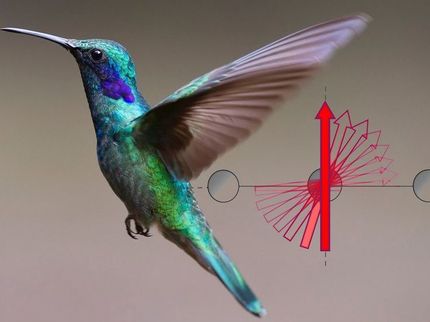Clarifying the role of magnetism in high-temperature superconductors
A collaboration of scientists from the RIKEN SPring-8 Center, Osaka University, the Japan Atomic Energy Agency, and the Japan synchrotron radiation Research Institute have published research clarifying the role of magnetism in a new type of high-temperature superconductor. The research gives us a better understanding of the atomic-scale behavior of these materials. Physicists hope that, by understanding how these materials superconduct at relatively high temperature, they can eventually learn enough to make materials that superconduct close to room temperature.
It is known that the phenomenon of superconductivity -- where materials conduct electricity without resistance -- arises when pairs of electrons become coupled together or "paired". With traditional superconductors, this pairing arises due to vibrations of the ions in the structure. But this is not always the case: there are other types of materials, such as cuprate superconductors and a relatively new class of superconductor iron-pnictide superconductors, that was discovered by a group led by Hideo Hosono at the Tokyo Institute of Technology, where magnetism may be the paring mechanism.
According to Alfred Baron, the leader of the Materials Dynamics Lab at RIKEN SPring-8 Center, "The question we addressed was how the atomic vibrations in the iron pnictides are affected by magnetism. This was especially interesting because atomic vibrations are understood to be driving force of the older type of low-temperature superconductors, while magnetism is considered to be the probable driving mechanism of the new, high-temperature, superconductivity. Thus, it was in some sense, an overlap of the old with the new."
Using a technique called inelastic x-ray scattering on two beamlines of the powerful SPring-8 synchrotron facility in Harima, Japan, the group was able to measure the dynamics in specially prepared single-domain samples. Comparing their measurements to calculations then suggested that magnetic fluctuations play an important role in the atomic vibrations. Naoki Murai, the graduate student spearheading the measurement explains, "By very gently pressing the material in the correct direction we were able to observe effects due to the onset of magnetic order". Says Baron, "One of the nice things about this work is that it provides a basis for describing atomic vibrations in this whole class of materials--do calculations with magnetism and then add fluctuations".
Baron says the collaboration will continue to investigate the properties of these fascinating materials, and also, more generally, the interaction of magnetism and atomic vibrations.
Original publication
Murai, N. and Fukuda, T. and Kobayashi, T. and Nakajima, M. and Uchiyama, H. and Ishikawa, D. and Tsutsui, S. and Nakamura, H. and Machida, M. and Miyasaka, S. and Tajima, S. and Baron, A. Q. R.; "Effect of magnetism on lattice dynamics in SrFe2As2 using high-resolution inelastic x-ray scattering" Phys. Rev. B; 2016
Original publication
Murai, N. and Fukuda, T. and Kobayashi, T. and Nakajima, M. and Uchiyama, H. and Ishikawa, D. and Tsutsui, S. and Nakamura, H. and Machida, M. and Miyasaka, S. and Tajima, S. and Baron, A. Q. R.; "Effect of magnetism on lattice dynamics in SrFe2As2 using high-resolution inelastic x-ray scattering" Phys. Rev. B; 2016
Organizations
Other news from the department science

Get the chemical industry in your inbox
By submitting this form you agree that LUMITOS AG will send you the newsletter(s) selected above by email. Your data will not be passed on to third parties. Your data will be stored and processed in accordance with our data protection regulations. LUMITOS may contact you by email for the purpose of advertising or market and opinion surveys. You can revoke your consent at any time without giving reasons to LUMITOS AG, Ernst-Augustin-Str. 2, 12489 Berlin, Germany or by e-mail at revoke@lumitos.com with effect for the future. In addition, each email contains a link to unsubscribe from the corresponding newsletter.



























































